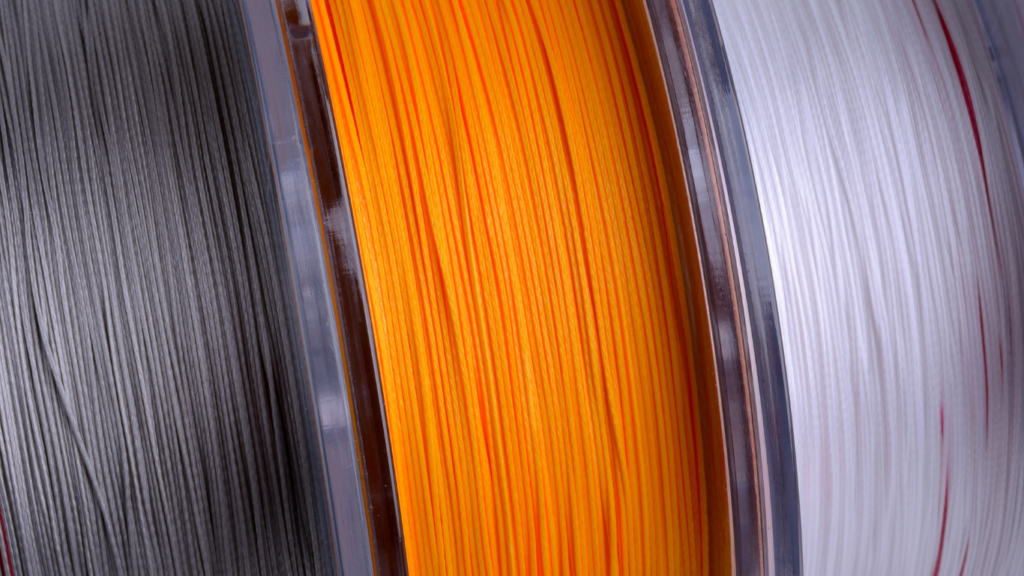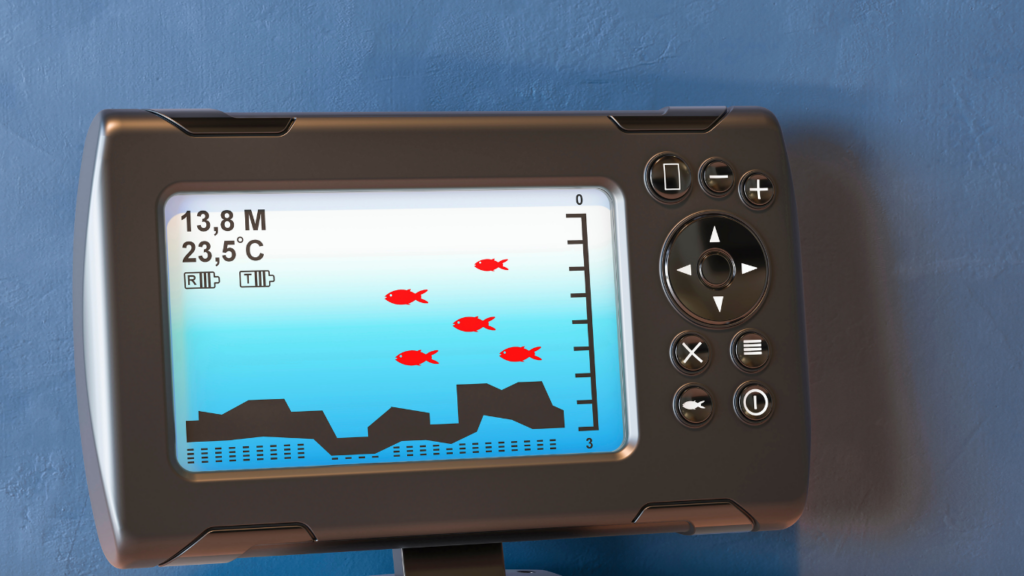Understanding Fishing Lines
Fishing lines play a crucial role in determining success out on the water. Each type—monofilament, fluorocarbon, and braided—offers unique characteristics that cater to specific fishing conditions and techniques.
Importance Of Choosing The Right Fishing Line
Using the appropriate fishing line impacts casting performance, bait presentation, and the ability to reel in your catch. A poorly-matched line can decrease sensitivity, reduce durability, or even lead to line breaks. For instance, fluorocarbon lines provide superior invisibility in clear water, while braided lines excel in heavy cover due to their strength and low stretch. Choosing the right line ensures optimal performance in varied environments.
Key Factors To Consider
When selecting a fishing line, consider factors such as strength, visibility, and water conditions. Line strength, measured in pounds, determines how much weight a line can handle. Fluorocarbon is ideal for low visibility, as it has a refractive index similar to water. The abrasion resistance of braided lines makes them better for rocky or weedy environments. Additionally, fishing techniques like trolling or finesse fishing affect your choice, as some lines work better for specific methods. Matching these factors to your fishing scenario ensures greater success.
Monofilament Fishing Line
Monofilament fishing line is a versatile option preferred by many anglers for its ease of use and affordability. It’s made from a single strand of nylon, which gives it unique properties.
Pros Of Monofilament
- Affordability: Monofilament typically costs less compared to other line types, making it ideal for beginners or those fishing on a budget. For example, a 300-yard spool might be priced as low as $5-$10.
- Stretch: Its stretch helps absorb the shock when fighting fish, reducing the chance of line breakage during aggressive runs or jumps.
- Ease Of Handling: Monofilament is soft and easy to knot, simplifying rig setup and reducing frustration, especially for new anglers.
- Neutral Buoyancy: Its near-neutral buoyancy supports various fishing techniques, including topwater and mid-depth presentations.
- Visibility Options: It comes in various colors like clear, green, and blue to match water conditions for improved stealth.
Cons Of Monofilament
- Lower Strength-To-Diameter Ratio: Monofilament is thicker than fluorocarbon or braided lines of the same strength, making it less suitable for deepwater or heavy cover fishing.
- Stretch Drawback: While beneficial in some scenarios, the stretch can reduce sensitivity, making it harder to detect soft bites.
- UV Degradation: Prolonged exposure to sunlight weakens monofilament over time, requiring regular replacement to maintain performance.
- Memory: It retains “memory” after being spooled, risking tangles and coils, especially after extended use.
Fluorocarbon Fishing Line

Fluorocarbon fishing line offers unique benefits, particularly for anglers targeting wary fish in clear water. Its strength, invisibility, and durability make it a favored choice in specific fishing scenarios.
Advantages Of Fluorocarbon
1. Low Visibility
Fluorocarbon’s refractive index closely matches that of water, making it nearly invisible underwater. In clear water conditions, this property reduces the likelihood of spooking fish.
2. High Abrasion Resistance
Its dense composition improves durability and resistance to nicks or cuts. When fishing near rocky areas or sharp structures, fluorocarbon holds up better than monofilament.
3. Sensitivity
Fluorocarbon has less stretch than monofilament, enhancing bite detection. This feature is valuable for techniques requiring precision, like jigging or drop shotting.
4. Sink Rate
Fluorocarbon sinks faster due to its density. This makes it an excellent choice for fishing lures or baits that need to stay deeper in the water column.
5. UV Resistance
Unlike monofilament, fluorocarbon resists UV damage. It retains its properties over time, even with prolonged sun exposure.
Drawbacks Of Fluorocarbon
1. Higher Cost
Fluorocarbon is more expensive than monofilament, making it less accessible for budget-conscious anglers. For large spools, the cost can quickly add up.
2. Memory And Stiffness
Fluorocarbon retains memory, leading to line coils and tangles if spooled improperly. Its stiffness can also make casting challenging for beginners.
3. Reduced Knot Strength
Certain knots tied with fluorocarbon are prone to slipping or breaking. Using specific fluorocarbon-friendly knots is essential to avoid losing fish.
4. Sinking Limitations
The sinking nature of fluorocarbon can be a drawback for topwater fishing, where a floating line is ideal for bait presentation.
5. Limited Shock Absorption
Fluorocarbon doesn’t stretch as much as monofilament, which reduces its ability to absorb sudden impacts. This makes it less forgiving when fighting aggressive fish.
Braided Fishing Line
Braided fishing line stands out for its exceptional strength, thin diameter, and near-zero stretch. It’s a top choice for anglers requiring precision, durability, and performance in specific fishing scenarios.
Benefits Of Braided Line
Braided line offers several advantages for demanding fishing conditions.
- High Strength-To-Diameter Ratio: Braided lines are incredibly strong relative to their thin diameter, enabling longer casts and greater line capacity on reels. For instance, a braided line with a 20-pound test often has the diameter of a monofilament line rated at 6 pounds.
- Sensitivity: Near-zero stretch provides excellent sensitivity, making it easier to detect subtle bites or feel bottom structure when jigging or drop-shot fishing.
- Durability: Braided line resists wear and tear from factors like abrasion against rocks, vegetation, or heavy cover. This makes it reliable for fishing in severe conditions like saltwater or areas with thick weeds.
- Longevity: It doesn’t degrade as rapidly over time compared to monofilament, holding up against UV exposure and environmental conditions.
- Castability: The thin profile and supple nature of braided lines improve both casting distance and accuracy.
Downsides Of Braided Line
Despite its many strengths, braided line does present some challenges.
- Visibility: Braided lines are highly visible underwater, which can discourage bites in clear water or when targeting finicky fish. A fluorocarbon or monofilament leader may be necessary to mitigate this issue.
- Cost: It’s more expensive upfront than monofilament or some fluorocarbon lines, which could be a concern for those prioritizing affordability.
- Knot Challenges: Knots on braided lines require extra care, as improper tying or certain knot types can slip or weaken the overall strength.
- Lack Of Stretch: While beneficial for sensitivity, the lack of stretch reduces shock absorption, which can increase the likelihood of line breaks during sudden surges or powerful strikes.
- Line Wind Issues: Braided line is prone to wind knots and tangling, especially on spinning reels for inexperienced anglers or in windy conditions.
These factors make braided fishing lines ideal for dense cover, heavy lures, and situations where strength and sensitivity are crucial but less suited for scenarios requiring stealth or affordability.
Choosing The Right Fishing Line For Your Needs
Selecting a fishing line involves evaluating your fishing style, target species, and conditions. Each line type—monofilament, fluorocarbon, and braided—offers distinct advantages that cater to specific scenarios.
Tips For Matching Fishing Line To Fishing Style
- Casual fishing: For general-purpose use, I prefer monofilament due to its versatility, ease of handling, and affordability. It works well for many species and setups.
- Clear water scenarios: Fluorocarbon excels here with its near-invisibility underwater. I typically use it for finesse techniques like drop-shotting or targeting cautious fish species.
- Heavy-cover or deep-water fishing: In dense vegetation or when chasing large species in deeper waters, braided lines provide the strength and sensitivity needed for precision and power.
Common Scenarios And Recommendations
- Lure fishing in clear freshwater: When casting small crankbaits or jigs for bass in clear lakes, I use fluorocarbon for its low visibility and improved sensitivity.
- Topwater fishing: Monofilament is ideal here since its neutral buoyancy keeps lures on the surface. For example, I’ve had success with topwater poppers on monofilament lines.
- Saltwater or big game fishing: I lean toward braided line for its strength and durability when targeting saltwater species like tarpon or tuna. Adding a fluorocarbon leader improves stealth and abrasion resistance.
- Budget-conscious setups: Monofilament remains my go-to for affordability and versatility, especially for beginners practicing casting or fishing lighter gear.





